Okay, so Ray Charles saw this one coming. But that doesn’t make the final head-to-head for these big, bronzed Aussies any less compelling.
After all, not only does this back-to-back determine who’s got the bigger local-performance stick, these cars in these very specifications are how we are going to remember them when the sun finally goes down on local car-making. Them’s big shoes, I tells ya.
And I don’t want to hear any griping about how either Ford or Holden have already taken their bats and balls and gone home, leaving us with leftovers to carry us through to our date with destiny. That just ain’t true.
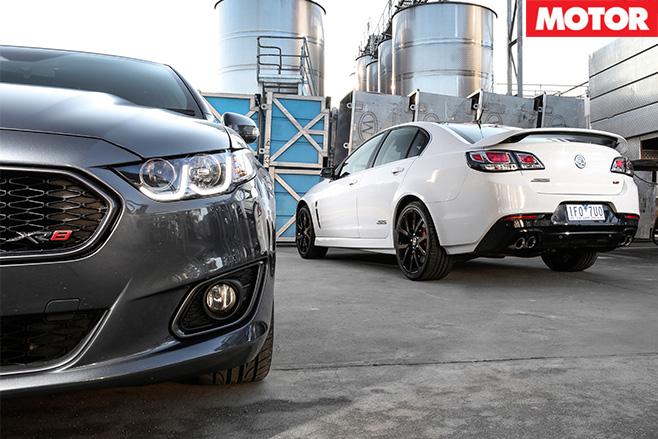
And Holden? Well, it isn’t planning on fizzing out like damp fireworks, either. In the red corner, the Commodore SS has picked up a few visual changes, some new gearing, suspension and brake tweaks and the piece de resistance: the 6.2-litre LS3 V8 nicked from the storage cage over at HSV.
They may both be the last of their respective lines, but it’s pretty easy to see that evolution ran out of steam much earlier in one than the other. The Ford seems to have called time on cell mutation earliest, while the Holden has continued to morph, develop and improve as the last handful of years have passed.
Jump inside and the XR8 is immediately the product of a decade earlier. The materials are fine, no problems there, but the layout is a bit clumsy and the feeling is of sparseness. Sparseness works for Scandinavian furniture, but not so much in performance sedan, it seems.
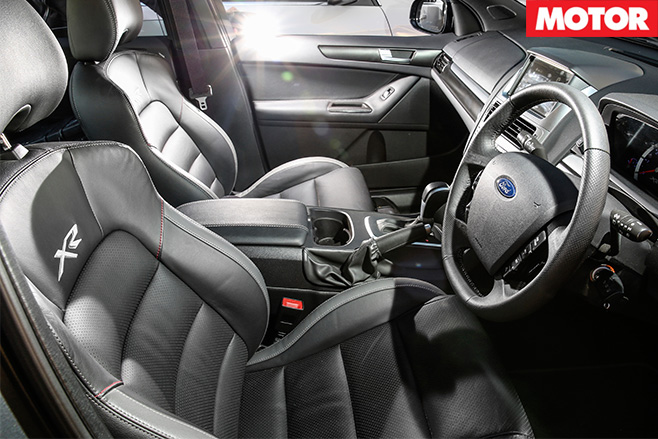
The SS, meanwhile, is a much plusher place to be with a more contemporary layout and soft, high-end finishes (although we’re not sure about the highly reflective brightwork touches).
The Holden’s instrumentation is also streets ahead and there’s more kit, including stuff like electric front chairs and paddles for the gearbox in the auto version (even though our test car was a manual). The clincher: a head-up display in the SS that works beautifully.
And then there’s the Ford’s seating position. You’ve doubtless heard us bang on about this before, but the XR8 is a lot more difficult to find a comfy position in. Traditionally, the seat has been too high and the steering column too low even at its highest position. To be fair, somebody at Ford has been listening and this model is definitely better with what feels like a slightly lower altitude for the driver’s seat.
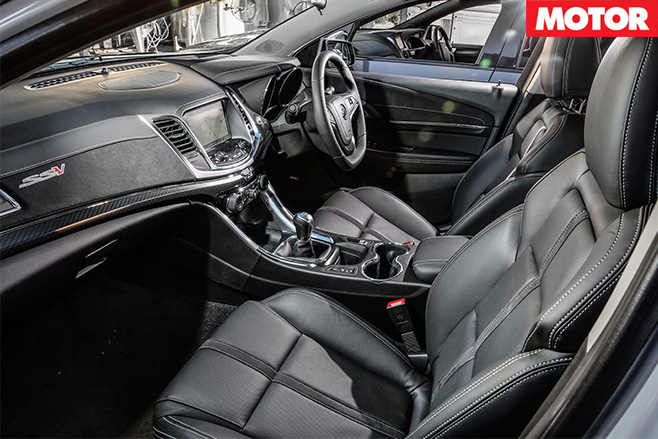
The Holden’s keyless start is a good set-up, though, and via a start button and a small lozenge on the door handle, you can unlock, enter the car and start the donk without taking the key from your pocket. They should all be this good. They’re not.
In the XR8’s case, you get an old-school central locking system and the key still needs to be inserted into the ignition barrel and given a twist. It is a one-hit wonder these days, though, and the engine will continue to crank until it fires, even after you’ve let go of the key itself. We’ll take the fully keyless option, thanks.
So, you’ve got them both fired up, how does it pan out from there?
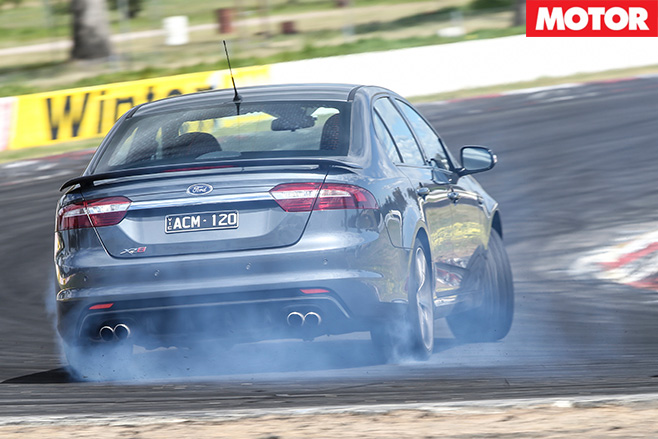
But back-to-back it with the Commodore and, again, you can see where the development has gone. Not only does the Commodore have more feedback and a better quality of it at that, it’s also a more natural steerer. As in, what you get back is precisely what you expected, given what you just put in. Okay, neither is the last word in feedback fidelity, but the Holden is miles ahead.
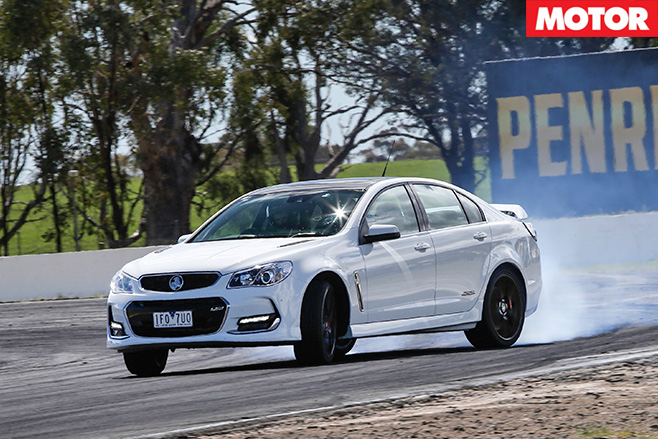
By then, you will also have noticed that the XR8, despite the much firmer ride, has absolutely no more resistance to body roll than the SS. It also doesn’t seem to have the damping sorted out with the same degree of accuracy that the SS displays. In fact, the Holden’s front end is quite amazing for its ability to stick, steer and remain supple all at the same time.
The situation continues at the rear, too, and where the Commo has bags of power-down, the Ford will be lighting up the ESP light one helluva lot quicker. We noticed the odd thump or clunk from the Falcon’s rear end, too. Consider that the Ford’s rear-end architecture dates back to the BA of 2002, a time when an XR8 had 260kW versus the 335 of this one, and you can see how the basic design is being stretched.
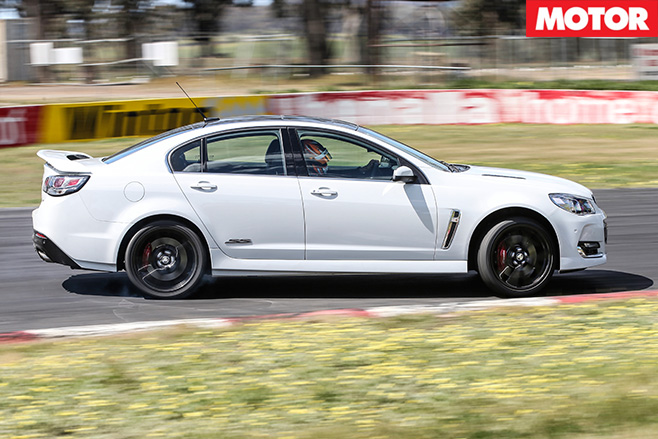
The Commodore still rewards a driver who is prepared to state firmly and early where they would like the apex to occur and then sticks to that strategy. It will tolerate a mid-corner change of mind in as much as it won’t hurl you off into the scrub.
The XR8, meantime, needs even more warning that you’re about to tip it in, but it won’t want to know about any supp regs beyond that point. Try to alter its trajectory from there on and you’re in more trouble.
It all comes down to the natural-feel steering we mentioned and, not too surprisingly, mechanical grip. Frankly, the Commodore has pretty good grip by any standards, the Falcon… not so much.
In fact, while the Ford doesn’t like any rough stuff from the helm, even a delicate touch requires you to wash off more speed than you might have been expecting to. You must then be equally patient on the other side before getting into the supercharger again. And once it’s all started to slide, there’s absolutely no option but to wait until it all slows down enough for the planet to catch up under it.
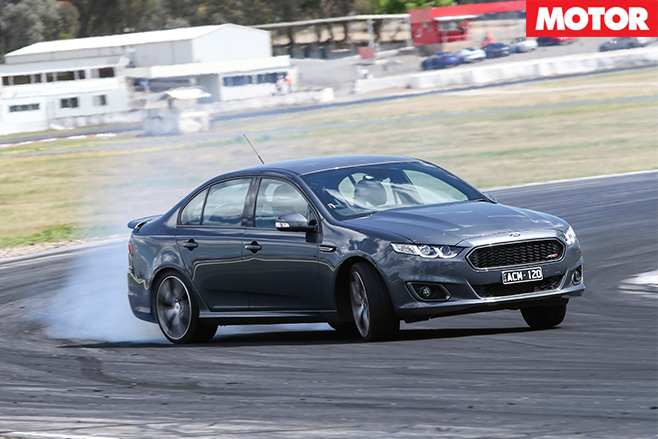
When it comes to stopping, the optional Brembos of the new SS come into their own, with the SS taking 37.07m metres to haul up from 100km/h. The Ford continues the Falcon tradition of feeling (or should I say, being) a bit under-anchored and needing more than 38 metres to do the same thing.
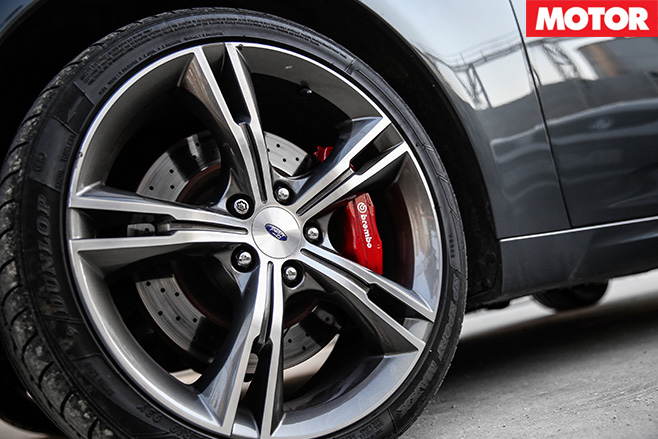
The stopwatch confirms as much, and while the Ford gets to 100km/h in 5.17sec and across the first 400m in 13.25sec with a trap speed of 178.41km/h, the Commodore isn’t too far behind with 0-100km/h in 5.27sec and a 13.44sec quarter at 174.4km/h.
Both cars battled a strong headwind on the day so the times are a few tenths off our best, but the times are still relative – the Falcon is still faster, but now only just.
To be honest, the big differences in the real world amount to both the way the power is developed and the soundtrack. The blown engine in the XR8 ensures that every kilowatt hits at once and then it’s all over as quickly as it started.
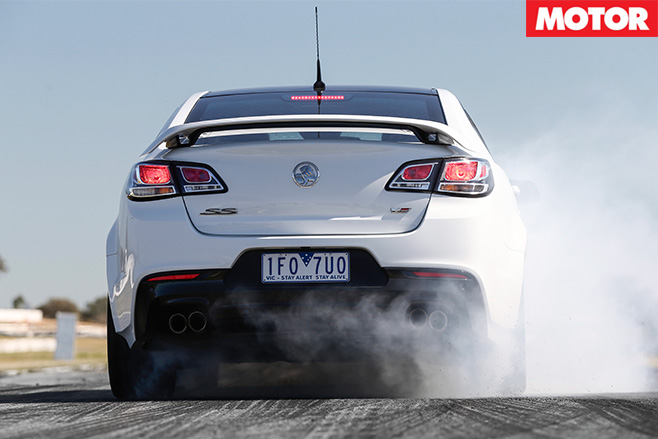
The soundscape, meanwhile, is all Holden. Yes, the Ford sounds like a V8 and there’s a tiny bit of blower whine when you’re fair up it, but it’s muted and never intrudes.
The SS meanwhile, has a clever system of high-tech exhaust tips, a bi-modal valve and a rustic, but very effective, tube that transfers V8 music from the engine bay into the cabin without resorting to the sort of cheating that sees some makers now synthesising the engine note via a computer and the car’s sound system.
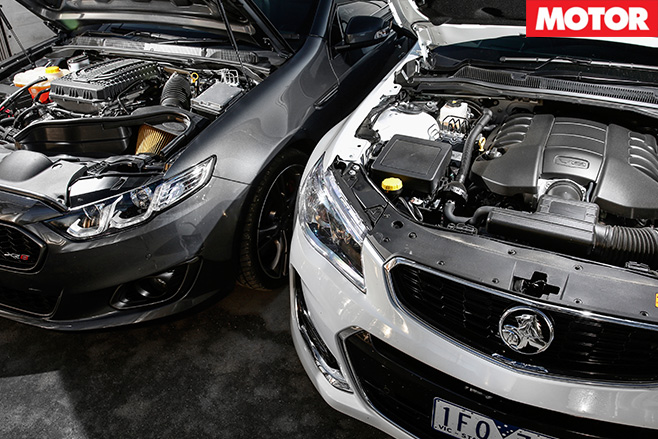
Pricing is more or less line-ball, with Ford asking $53,490 for the XR8 in manual form (or $55,690 for the auto as tested) and Holden asking $53,990 for the manual SS V Redline.
Based on the rest of the numbers – and our original statement that this is how we will remember these big Aussie blokes – there’s a clear winner here.
While the XR8 definitely makes a case for itself, in some ways it’s seriously off the pace and in others it’s old-fashioned in a not-so-good way. That said, it’s the best it’s ever been. But the Commodore is also the fittest, most appealing it’s ever been and, at the same time, it’s measurably better than the Ford. And that’s the nub of it, folks.
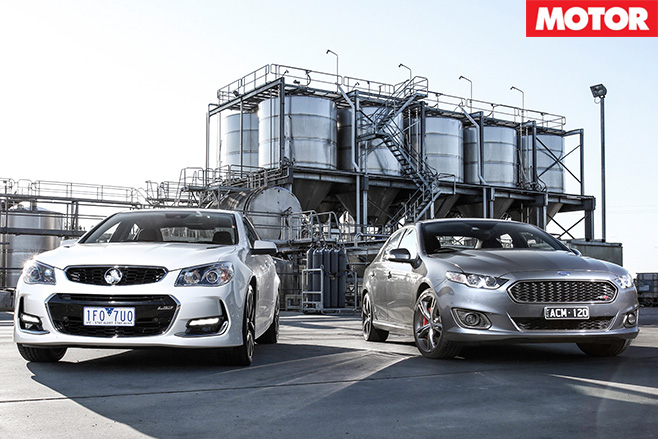
It’s all about how we will remember them and, in that sense, the Commodore SS cleans up. From the bottom of that swimming pool, of course, for such is the fate of the Aussie muscle car.
The Specs
| u00a0 | u00a0 | Holden VF Series II ss v redline | u00a0 | Ford FG X Falcon XR8 |
| Body | u00a0 | 4-door, 5-seat sedan | u00a0 | 4-door, 5-seat sedan |
| Drive | u00a0 | rear-wheel | u00a0 | rear-wheel |
| Engine | u00a0 | 6162cc V8, OHV, 16v | u00a0 | 4951cc V8, DOHC, 32v, supercharger |
| Bore/Stroke | u00a0 | 103.25 x 92mm | u00a0 | 92.2 x 92.7mm |
| Compression | u00a0 | 10.7:1 | u00a0 | 9.25:1 |
| Power | u00a0 | 304kW @ 6000rpm | u00a0 | 335kW @ 5750rpm |
| Torque | u00a0 | 570Nm @ 4400rpm | u00a0 | 570Nm @ 2200-5500rpm |
| Power/weight | u00a0 | 170kW/tonne | u00a0 | 181kW/tonne |
| Transmission | u00a0 | 6-speed manual | u00a0 | 6-speed auto |
| Weight | u00a0 | 1793kg | u00a0 | 1861kg |
| u00a0Suspension (F) | u00a0 | struts, coil springs, anti-roll bar | u00a0 | A-arms, coil springs, anti-roll bar |
| Suspension(R) | u00a0 | multi-links, coil springs, anti-roll bar | u00a0 | multi-links, coil springs, anti-roll bar |
| L/W/H | u00a0 | 4966/1898/1471mm | u00a0 | 4949/1868/1458mm |
| Wheelbase | u00a0 | 2915mm | u00a0 | 2838mm |
| Tracks | u00a0 | 1593/1590mm (f/r) | u00a0 | 1583/1598mm (f/r) |
| Steering | u00a0 | electrically-assisted rack-and-pinion | u00a0 | hydraulically-assisted rack-and-pinion |
| BrakeS (F) | u00a0 | 355mm ventilated discs, 4-piston calipers | u00a0 | 355mm ventilated discs, 4-piston calipers |
| Brakes (R) | u00a0 | 360mm ventilated discs, 4-piston calipers | u00a0 | 330mm ventilated discs, single-piston calipers |
| Wheels | u00a0 | 19.0 x 8.5-inch (f); 19.0 x 9.0-inch (r) | u00a0 | 19.0 x 8.0-inch (f); 19 x 9.0-inch (r) |
| Tyre Sizes | u00a0 | 245/35 R19 95Y (f); 275/35 R19 (r)u00a0 | u00a0 | 245/35 ZR19 (f); 275/30 ZR19 (r) |
| Tyre | u00a0 | Bridgestone Potenza RE050A | u00a0 | Dunlop Sport Maxx RT |
| Price as tested | u00a0 | $53,990 | u00a0 | $55,690 |
| Prosu00a0 | u00a0 | New-found grunt; involving handling; value | u00a0 | Awesome engine; fun in isolation |
| Cons | u00a0 | For what it is, virtually nothing | u00a0 | Outdated chassis; poor ride; lifeless steering |
| Star Rating | u00a0 | 4.5 out of 5 | u00a0 | 3.5 out of 5 |




